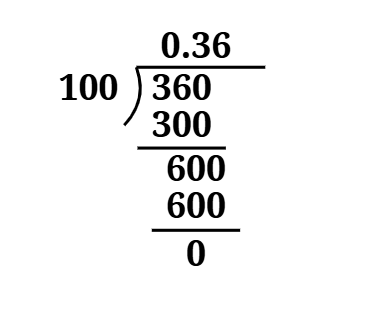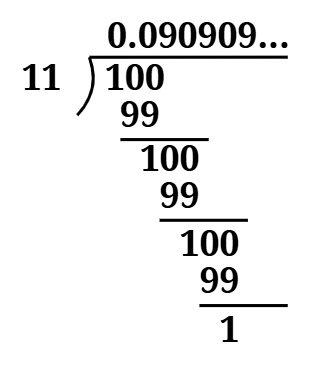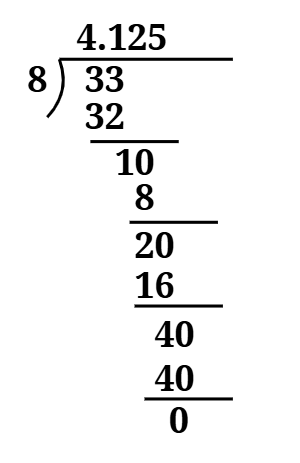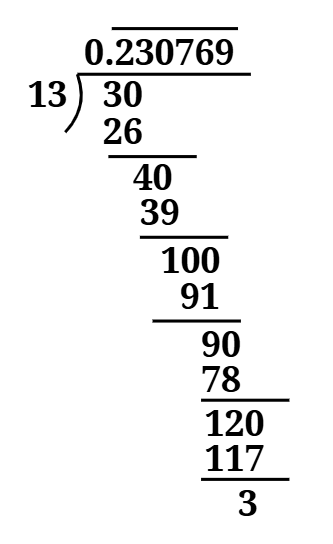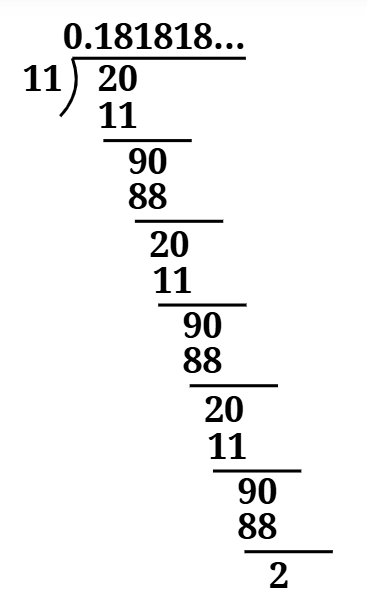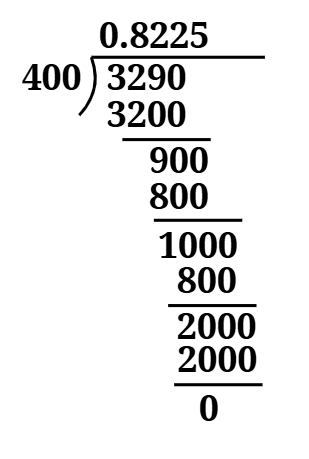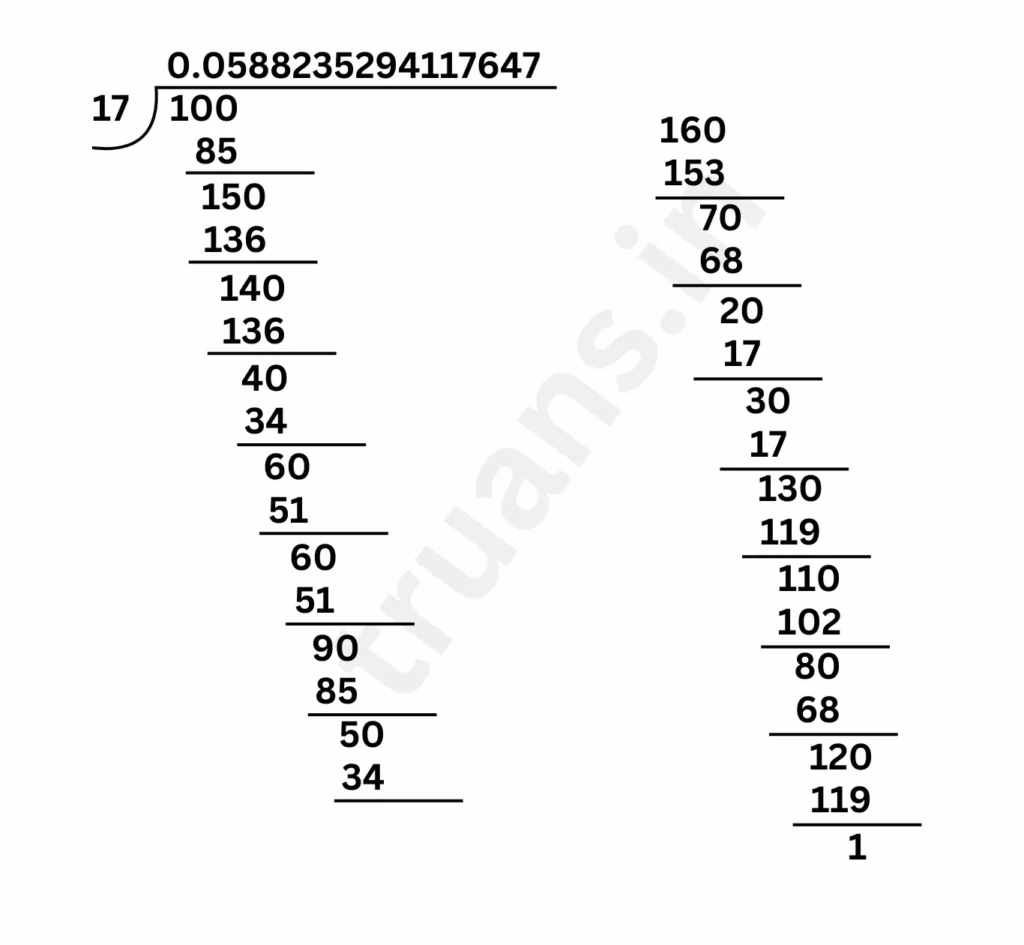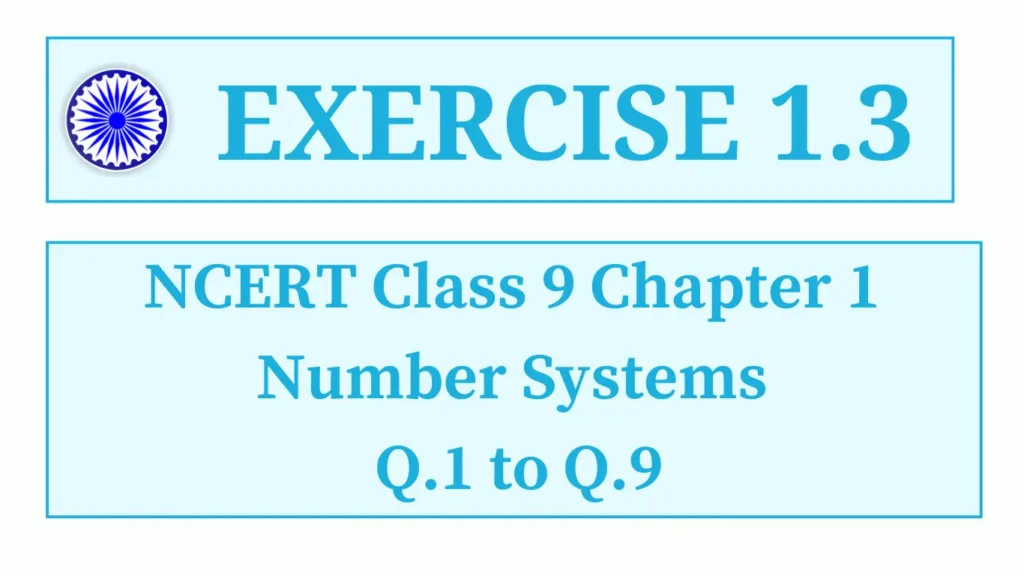
Exercise 1.3 NCERT Class 9 contains a total of nine questions. All questions are based on the topic of real numbers and their decimal expansions.
Exercise 1.3 NCERT Class 9 Mathematics Solutions
The first question of Exercise 1.3 NCERT Class 9 is about decimal form and their kind of decimal expansion.
1. Write the following in decimal form and say what kind of decimal expansion each has:
(i)
(ii)
(iii)
(iv)
(v)
The second question of Exercise 1.3 NCERT Class 9 is wholly about the decimal expansion of .
2. You know that = 0.142857. Can you predict what the decimal expansions of are, without actually doing the long division? If so, how?
Answer
Yes, we can predict the decimal expansion of by just using the decimal expansion of .
We have = 0.142857. Here, we can see that (142857) is the repeating block of digits. We can imagine this as given in the image below.
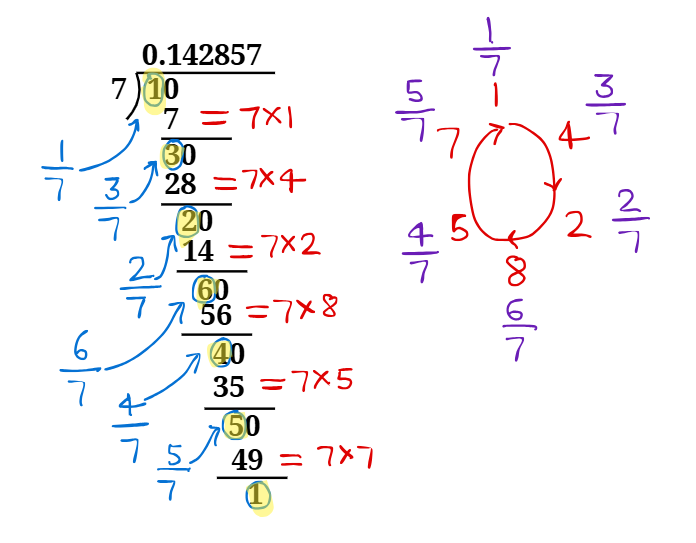
We can write:
= 0.285714
Here, you only need to find first decimal 2 and other decimals can be written in cyclic order from the decimal expansion of = 0.142857.
Similarly,
= 0.428571.
= 0.571428.
= 0.714285.
= 0.857142.
The third question of Exercise 1.3 NCERT Class 9 is about the conversion of decimal form of a number to a form.
3. Express the following in the form , where and are integers and .
(i) 0.6
Answer
Let = 0.6
----->(1)
----->(2)
Subtracting equation (1) from equation (2), we get
.
.
.
Hence, 0.6 =
(ii) 0.47
Answer
Let = 0.47
----->(1)
----->(2)
Subtracting equation (1) from equation (2)
.
.
.
Hence, 0.47 = .
(iii) 0.001
Answer
Let = 0.001
----->(1)
----->(2)
Subtracting equation (1) from equation (2), we get
.
.
Hence, 0.001 =
The fourth question of Exercise 1.3 NCERT Class 9 is about the conversion of decimal form of a number to a form.
4. Express 0.99999... in the form . Are you surprised by your answer? With your teacher and classmates discuss why the answer makes sense.
Answer
Let = 0.99999 . .
----->(1)
----->(2)
Subtracting equation (1) from equation (2), we get
.
.
.
Hence, 0.9 = .
Here , 0.99999 . . . = 1, as we have number of 9's infinite and it resembles equal to 1 as we round-off.
The fifth question of Exercise 1.3 NCERT Class 9 is about the conversion of decimal form of a number to a form.
5. What can the maximum number of digits be in the repeating block of digits in the decimal expansion of ? Perform the division to check your answer.
The sixth question of Exercise 1.3 NCERT Class 9 is about finding the property of the denominators of rational numbers.
6. Look at several examples of rational numbers in the form , where and are integers with no common factors other than 1 and having terminating decimal representations (expansions). Can you guess what property must satisfy?
Answer
Below are given the several examples of rational numbers in the form , , where and are integers with common factors other than 1 and having terminating decimal expansions.
, here the factorization of the denominator 2 = 2×1 = .
, here the factorization of the denominator 4 = 2×2×1 = .
, here the factorization of the denominator 10 = 2×5×1 = .
, here the factorization of the denominator 25 = 5×5×1 = .
, here the factorization of the denominator 40 = 2×2×2×5×1 = .
, here the factorization of the denominator 100 = 2×2×5×5×1 = .
, here the factorization of the denominator 1250 = 2×5×5×5×5×1 = .
, here the factorization of the denominator 1000 = 2×2×2×5×5×5×1 = .
, here the factorization of the denominator 5000 = 2×2×2×5×5×5×5×1 = .
, here the factorization of the denominator 625 = 5×5×5×5×1 = .
Conclusion: Property of q
From the examples given above, we can conclude that the denominator of a rational number having terminating decimal expansion must possess 2 or 5 as its only factors. In other words, .
The seventh question of Exercise 1.3 NCERT Class 9 is about numbers whose decimal expansions are non-terminating non-recurring.
7. Write three numbers whose decimal expansions are non-terminating non-recurring.
Answer
Three numbers whose decimal expansions are non-terminating non-recurring can be any three of the following.
.
0.101001000100001..., 2.202002000200002..., 0.03003000300003..., 4.1311311131111...etc.
You can take any of the following group of numbers as these are all irrational numbers:
Square roots of prime numbers
.
Square roots of composite numbers that are not perfect squares
.
Cube roots of prime numbers
.
Cube roots of composite numbers that are not perfect cubes
.
Fourth roots of prime numbers
.
Similarly, you can find infinitely many irrational numbers whose decimal expansion is non-terminating and non-recurring. You must also know that the numbers of the following form are also irrational numbers.
.
The eighth question of Exercise 1.3 NCERT Class 9 is about irrational numbers lying between two rational numbers.
8. Find three different irrational numbers between the rational numbers and .
Answer
Decimal expansion of and are
= 0.714285 = 0.714285714285...
= 0.81 = 0.81818181...
Here, 0.71 < 0.72 < 0.73 < 0.74 < 0.75 < 0.76 < 0.77 < 0.78 < 0.79 < 0.80 < 0.81
Clearly, three irrational numbers between 0.7142857142857... and 0.81818181... are
(i) 0.75075007500075000075...
(ii) 0.7670767007670007670000767...
(iii) 0.808008000800008000008...
Similarly, you can find infinitely many irrational numbers. Other irrational numbers between and are :
0.72072007200072000072...
0.7303003000300003000003...
0.741741174111741111...
0.7434743434743434743434...
0.74074007400074000074...
The ninth question of Exercise 1.3 NCERT Class 9 is about classifying whether a number is rational or irrational.
9. Classify the following numbers as rational or irrational:
(i)
Answer
Irrational, as 23 is not a perfect square and it is also a prime number.
(ii)
Answer
.
Rational.
(iii) 0.3796
Answer
Rational as 0.3796 is a terminating decimal expansion.
(iv) 7.478478...
Answer
Since 7.478478... = 7.478. The block of digits '4', '7', '8' repeats in the number. So, it is a non-terminating and recurring decimal expansion.
Hence, 7.478478... is a Rational Number.
(v) 1.101001000100001...
Answer
Irrational , as it is a non-terminating and non-recurring decimal expansion.

